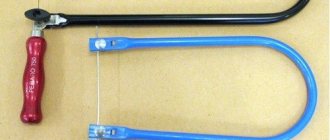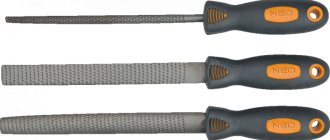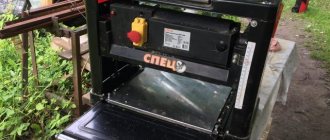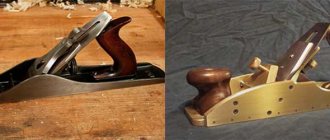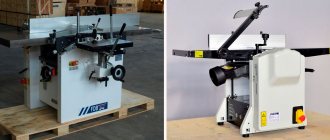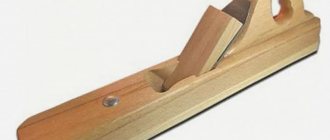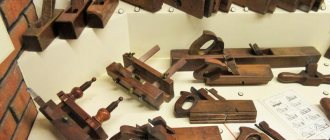Each carpentry workshop has a machine park. It is highly desirable to have a thickness planer available. This unit performs specific functions in the production of wood products. It can significantly facilitate and speed up the production of products.
What is a wood planer?
Wood is supplied to production in the form of boards, beams, and so on cut with a circular saw. To make workpieces suitable for further production from raw material, you need to process the surface more or less smoothly and maintain the size. A woodworking thicknessing machine is designed to give a wooden board the required thickness in one pass. The second function is to make the surfaces parallel. The output is a panel with two even, smooth sides and a given size in diameter.
Thicknesser for wood - device
The unit has a design similar to a jointer, but with some fundamental differences. The structure of a thicknessing machine for wood consists of the following blocks and mechanisms:
- a massive frame on which the assembly units are attached;
- drive consisting of an electric motor (one or two), sprockets, pulleys, drive chains and belts;
- working surface;
- feed rollers;
- shaft with knives;
- spring pressure mechanism;
- screw device for setting cutting thickness;
- sawdust suction system.
Thicknessing machines of industrial production are always equipped with a massive cast iron frame. The cylindrical cutter shaft can have up to four removable blades secured in the drum body with screws. The work table is guaranteed to have a length greater than 0.1 m according to TB requirements. Depending on the type, there are movable and fixed. Rollers move the workpiece during processing.
Thicknesser for wood - operating principle
The cutting knives are installed on top of the workpiece. The unit pulls the workpiece through feed rollers. They are installed below. Top mounting option available. The operator only performs the initial feeding and receiving of the processed part. The home workshop wood planer has an aluminum frame to reduce weight. The operating principle is the same as the industrial one. It doesn't make the side even. Initially, the curved workpiece will remain arched, only it will be calibrated in height.
Description
Quite often, novice craftsmen do not know what a surface planer is. If you, too, are among them, then you must understand: the device described is equipment with a cutting tool in the form of a knife shaft. The workpiece is fed along a horizontal table, which is the working table in the machine.
Today, single-sided and double-sided machines are known. The former have one knife shaft, which is designed to remove material from the upper part. Double-sided devices have an additional blade shaft located on the work table. The element is based on the surface, and if fixation is necessary, it is carried out by a bar and side rollers. Retention is provided by rollers that facilitate feeding. The latter can also be manual. A double-sided thicknesser machine is similar in design features to jointing equipment, so such units are often combined, which makes it possible to obtain jointer-thicknesser devices.
Thicknesser for wood - characteristics
To use equipment in work, you need to know its qualities. A household thicknessing machine for wood has the same characteristics as a unit for large-scale production, except for the position of different thicknesses. Indicators have different values depending on the brand. For industrial designs, the following basic values exist:
- width of the treated surface (up to 800 mm);
- thickness (10-180 mm) and length (up to 400 mm) of the material;
- maximum removable layer (4 mm);
- difference in the thickness of several simultaneously processed parts (4 mm);
- the size of the cutting shaft in diameter;
- workpiece feed speed;
- number of engines.
Cost of knives
In addition to the equipment, you may need thicknesser knives. Their price is 4100 rubles. These are double-sided cutting elements for planing processing. Suitable for all types of wood. It is based on a pure-grade hard alloy with a cobalt content of 18%. Consumables can be re-sharpened, which guarantees a long service life. Knives are made from high-speed steel HSS. Their thickness, width and length are 1.5 x 332 x 12 mm, respectively. The package contains two cutting elements.
Why do you need a wood planer?
The primary processing of solid wood is jointing. The thickness planer will be used secondarily. First, the board is planed using a rotating shaft with knives, feeding it manually along the table surface. This makes one side flat without bending and smooth. The jointer has a side plane perpendicular to the table. The sidewall is processed on it, forming an angle of 90°. Having planed two sides, you get one right angle. To maintain strict perpendicularity at other angles, it is necessary to carry out many additional operations on this machine.
You can finish finishing corners faster, better and more accurately using a surface planer. It will remove exactly the layer that is set with the screw device. The machine will calibrate the workpiece parallel to the surfaced side. Then the second sidewall is processed. In two passes, three right angles are obtained. This is what makes a wood planer very useful in production. It is recommended to complete the processing by running the surfaced side through a thicknesser to prevent warping.
Scope of application
This technique is found at all wood processing bases without exception. With its help, the following tasks are solved:
- equalizing the thickness of the workpiece;
- precise cutting of panels and boards for finishing floors or walls in public spaces;
- production of a perfectly smooth surface;
- flat processing.
Before getting behind the thicknesser, you need to carry out a thorough debugging procedure, paying attention to:
- on the accuracy of the installation of the machine - it should be installed evenly and without distortion;
- eliminate low placement of the corrugated shaft;
- adjust the pressure on the processing surface in the rear block (pressure block);
- set the parameters in such a way as to avoid high pressure on the lower rollers working to feed the workpiece above the level;
- check the functional part of the exhauster. If there is a malfunction, you may encounter chips getting into the rear main roller;
- Finally, you need to make sure that the cape visor is present and in the correct position;
- check the functioning of the exhauster. If it malfunctions, chips may end up in the rear main roller;
- look at the installation of the cap visor.
How does a thickness planer differ from a jointer?
Both machines are very similar to each other. A thicknesser and a jointer both plan. However, they differ in purpose and design. Purpose of jointer:
- primary processing of one side of a piece of solid wood until it is smooth to the touch;
- giving the surface of the workpiece a flat plane (without curvature);
- jointing the sidewall of a part to form a right angle.
The design of this machine involves installing a shaft with knives on the table. The cutting edges are located below the part. Feeding is carried out manually along the table plane. When working, you must use a special stop to push the workpiece. The operator is forced to press hard on the part to the end of the pass in order to obtain a flat surface.
Thicknesser is intended for:
- calibrating the thickness of a part according to a given value;
- ensuring parallelism of opposite sides.
The drum with knives is located on top of the wood board. This processing method requires significant effort to feed the workpiece. It will no longer be possible to push it manually, so the machine is equipped with upper or lower feed rollers. The movement of the part in the working area occurs automatically. This makes working on a thickness planer safer and makes the operator’s work easier. The disadvantage of the machine is that it does not provide a flat surface.
Purpose of a surface planer
In order to understand the importance of having a surface planer in the workshop, just look at any piece of carpentry: a table, a chair, a wardrobe, a bed... They all consist of boards or bars that have the same thickness along their entire length and edges that are strictly parallel to each other. The parallelism of the edges and constant thickness give the product a perfect look that pleases the eye, demonstrating the accuracy and skill of the craftsman. This kind of work cannot be done without a thickness planer.
- A thicknesser is a tool used to draw lines on a part at a given distance.
- Also in everyday life, a thicknesser is a woodworking equipment designed for planing workpieces to size according to a given thickness.
If in a conversation there is a fear that the interlocutor will not understand which type of thicknesser we are talking about, then the tool for applying markings is called a marking thicknesser, and woodworking equipment is called a thicknesser.
The word "reismus" came into Russian from South German. In modern German, this instrument is called “streichmas”, that is, a device for applying strokes. German carpenters also use the word “raismas”. In Russian, the “half-German” pronunciation of the name of the instrument is often found: “reismas”.
Types of thicknessing machines
There are many designs designed for use in different operating conditions depending on the needs and production volumes. According to power they are distinguished:
- industrial stationary;
- mobile for large production;
- medium power for carpentry workshops;
- mini planer for wood.
According to the number of surfaces processed:
- one-sided;
- double sided;
- multilateral.
Machines with one (upper) processing plane are used in everyday life and in small industries. The class of professional equipment includes units with two- and multi-sided simultaneous planing of planes. Double-sided analogues have two knife shafts. They work on two opposite sides at once in one pass. Multilaterals are convenient in that they can create a workpiece configuration of any shape. Disadvantages include difficulty in maintenance and repair. However, a planer for wood of this type in large-scale production fully covers all costs.
Specifications
The main characteristics of surface planers are:
- weight;
- workpiece size;
- power.
The latter usually reaches 1800 W. The maximum thickness and planing width is the caliber of the thicknesser. These characteristics describe the permissible dimensions of the workpiece. The maximum planing width usually reaches 330 mm, while the thickness is 152 mm. The first parameter shows how wide a board you can process if you install it on an edge. These numbers do not mean that the surface planer is intended for planing massive and long boards. Their device simply won’t be able to get through. The optimal caliber is relatively small workpieces.
Thicknesser is a machine that is characterized by a certain planing depth. This feature shows how much wood can be removed at one time. The described equipment has a maximum depth of 3.2 mm. Wide boards should not be planed to extreme depth. As product sizes increase, the planing depth per pass decreases. The rotational speed of the knife shaft in surface planers reaches 10,000 rpm. The higher the speed, the better the quality of the planed surface.
How to choose a planer for wood?
Depends on operating conditions and production goals. To answer the question of how to choose a thickness planer, you need to know:
- electric motor power;
- functional features (how many sides it processes);
- basic processing parameters.
Having learned the preliminary characteristics, you can consider the design of the machine in more detail:
- The digital display is preferred.
- Feed rollers made of polymer do not track on wood.
- What type of knife mechanism is it?
- Convenient handles make it easy to carry.
- Does the home planer have a sawdust removal system?
Knives of thicknessing machines
There are different designs depending on the shaft design. It comes with a straight knife arrangement and a screw arrangement. The second type of shaft cuts into the wood smoothly, without impact. Allows you to achieve improved processing quality and reduced noise during operation. The disadvantage is the difficulty of installing many cutting elements.
Knives for thicknessing machines are divided into:
- flat straight with angular sharpening;
- thick two-layer;
- thin crescent-shaped for screw shafts.
The need to use a chip extractor
Woodworking thicknessers throw out large volumes of shavings during operation. It is best to remove it using a construction vacuum cleaner. If this is not done, waste will clog in the equipment. They penetrate the moving mechanisms and enter the planing area. All this reduces the quality of processing.
As a result, the master is unable to obtain a smooth surface of the workpiece. In support of the need to use a lumber waste disposal device, cleanliness in the workplace is also important.
Thicknesser for wood - rating
The choice was made based on the main characteristics and owner reviews posted on several specialized sites. Rating of thicknessing machines:
- Metabo DH 330
. The double-sided machine produces mirror-like surfaces at the output. - Special SRM-2000
. Along with other quality characteristics, it is lightweight, which is convenient when working outdoors. - Interskol RS 330-1500
. There are double-sided knives that can be swapped and work for a long time without sharpening. - Craton WMT 318
. Ensures reliable operation without significant repairs during daily operation for up to five years.
Electrical equipment, light, lighting
0 votes
+
Vote for!
—
Vote against!
Often craftsmen who love to work with wood, or owners of country houses, are faced with the need to plan a lot of boards to give them visual appeal. It is necessary to equalize the thickness of the material, determine the dimensions of the boards and panels, obtain a smooth surface of the blanks from which furniture will subsequently be made, or used to finish the floor or room. The solution to the problem may be to buy a thickness planer or make a thickness planer with your own hands, because a device with automatic feeding of workpieces and knife shafts made of high-speed steel significantly speeds up and facilitates the process of planing wood.
Purpose of a thickness planer
Thicknessing machines are designed for planar planing of workpieces - panels, bars and boards of thickness to a given size, and therefore are the main ones in woodworking enterprises. In addition, almost every carpenter has surface thicknessers. The main purpose of thicknessing machines is to uniformly service boards and other wooden products over the entire area and obtain blanks that have equal thickness over the entire width and length.
Thicknessers, when used in construction, are capable of processing large quantities of wide boards in one pass. Unlike industrial devices, household surface thicknessers are small in size and much lighter, which makes them easier to transport. In addition, modern models have a lightweight system for changing working knives and increased control of cutting depth in order to accurately adjust the thickness of the chips being removed.
As a rule, before carrying out this procedure, wooden surfaces are pre-treated on a jointer. For non-standard types of materials (polymers, soft plastics, foam-based insulation), thicknessing machines with rubber-coated metal feed rollers are intended, which are not capable of damaging the surfaces of the workpieces.
Sectional feed rollers, which are equipped with woodworking equipment, allow you to simultaneously feed workpieces of different thicknesses at the entrance to the machine. The thickness planer is one of the important equipment in carpentry and construction, as well as in the furniture industry, allowing the production of precise strips for wood furniture or slats for kitchen trim.
You cannot plane very thin workpieces on a homemade thicknessing machine, because vibrations occur, which affect the quality of the processed surface. The shortest length of the workpiece to be processed should be 100 millimeters greater than the distance from the front to the rear feed roller. If there is a need to mill shorter material, it must be securely fixed to the base. With the help of appropriate devices on thicknessing machines, it will be possible to process even wedge-shaped workpieces and level non-parallel planes.
The cutting depth shows the cut of the thicknesser in one pass: this indicator ranges from 1 to 3 millimeters, depending on the width of the material. The width of the workpiece characterizes the processing capabilities of products that have a certain size: the optimal solution is 30 - 330 millimeters. The performance of the machine is affected by the power of the machine. A 1.9 kW thickness planer is suitable for private workshops. Devices with a power higher than 1.8 kW are useful for planing hard wood - spruce, beech, pear, elm, ash.
Design of thickness planer
A thicknesser is a special device that belongs to the category of woodworking machines that successfully cope with planar, volumetric and profile milling of straight and curved workpieces made of solid wood.
By design they are distinguished:
- Single-sided thicknessing machines, on which planing is carried out only on the top side;
- Double-sided thicknessing machines, where two opposite sides are planed simultaneously - the bottom and the top;
- Special thicknessers - three-, four- and multi-knife.
The most widespread are single-sided thicknessing machines, which are simpler in design and, accordingly, in operation. We will consider their device today.
The table of a thicknessing machine, unlike a jointing machine, is made of one solid slab that is precisely planed and sanded, and it does not have a guide ruler in its design. In addition to the horizontal table, on which the thickness of the layer being removed is adjusted, the thicknesser consists of such basic elements as a special cutter, which is represented by several separate knives and a system for automatically feeding the wooden workpiece along roller guides.
The bed for a thickness planer is cast iron, hollow, solid, and all the parts and mechanisms of the machine are attached to it. A metal corner measuring 100 by 100 millimeters and a length of at least 1000 millimeters can serve as a support table. This length is explained by safety measures. The support table is hung on the technological corners of the machine, secured with bolts on one side and clamps on the other. The height of the table can be moved along the guide slides using a lifting mechanism.
A knife shaft is placed above the table. The workpiece feeding mechanism is represented by two pairs of rollers. The first of them is located in front of the knife shaft, the other - behind the shaft. The lower rollers are installed exactly under the upper ones. The upper rollers rotate from an electric motor through a gear drive, which is why they are called drive, feed or feed. The lower rollers are installed freely and are driven into rotation by the supplied material. These rollers are supporting or guiding. In double-sided thicknessing machines, the knife shafts are located in the table and above the work table.
The purpose of the lower rollers is to facilitate the feeding of material to the knives; they protrude above the surface of the work table by 0.2-0.3 millimeters. With a higher position of the lower rollers, the material being planed vibrates from the impacts of the knives, thin material will sag, and planing will turn out to be uneven. It is customary to make the front upper roller grooved for better adhesion to the unplaned surface of the workpiece. Such a roller is installed 2-3 millimeters below the surface of the material that is fed to the knives.
The upper back roller must be made smooth, because corrugation can spoil the planed surface of the wood. Place it 1 millimeter below the cutting edges of the knives. The feed mechanism rollers are arranged in parallel, so only parts of the same thickness can be fed into the thicknessing machine at the same time. Products that are thinner, even 2-3 millimeters, when they reach the knife shaft, will receive a strong blow to the end with a knife and fly back.
For simultaneous planing of lumber that has different thicknesses, a sectional grooved roller is introduced into the planer of the planer, which makes it possible to use the entire width of the machine and dramatically increase its productivity. The sectional roller consists of 12 corrugated rings, which are mounted on a common axis and connected to it by springs. When a product whose thickness is greater than the thickness of others that are simultaneously processed passes under the roller, the sections that press on it are shifted upward and maintain adhesion to the material under the action of springs.
In front of such a corrugated roller there are hangers, the purpose of which is to prevent the part from flying back out of the machine. On top, the knife shaft is covered with a massive lifting cap, which serves as a reliable fence and is a high-quality device that directs the chips into the exhauster funnel. In addition, the cap provides support for the fibers during planing; for this purpose, its lower edge is brought close to the knives.
You can increase the interchangeable knives from two to four. As a tool, in addition to a cutter, you can use a smooth drum covered with sanding paper. The drum can be turned from heat-resistant plastic, aluminum or hardwood. Suitable sizes: diameter 80 millimeters, length 100 millimeters. At one of the ends a groove is made for a nut and washer. On the side surface for attaching the skin, a longitudinal groove is cut, which has a trapezoidal shape, under a clamping bar of a similar shape. Drill three holes in the strip for screws with countersunk heads.
Feeding is carried out by upper rollers - rear smooth and front grooved. Two smooth rollers that rotate freely in bearings are able to reduce friction when moving material along the table. The typical maximum width of the processed product is 315 - 1250 millimeters, thickness - 5 - 160 millimeters, knife shaft diameter 100 - 165 millimeters, there are 2 - 4 knives on the shaft. The power of the electric motor reaches 1 - 44 kW.
The faster the shaft knives rotate, the cleaner and smoother the surface of the workpieces will be after planing. You can choose for use devices with a rotation speed of 6 - 10 thousand revolutions per minute. The weight, design of the thicknessing machine, as well as the compactness of the thicknesser directly characterize the ability to move the equipment. Compact machines that weigh 27 - 39 kilograms are the best choice.
At a certain distance of the working table from the knife shaft, the workpiece is planed to the size shown on the scale mounted on the machine bed. Clamps are installed on both sides of the knife shaft; they are able to prevent vibration of the workpieces. The chip breaker, which is located in front of the knife shaft, helps break the chips and presses the workpiece against the table, forming a cavity for accumulating chips along with a clamp.
Operating principle of a thickness planer
The principle of operation of the thickness planer is based on the method of flat planing of boards. The main working tool of a thickness planer is the knife shaft. Workpieces for processing are fed onto a horizontal work table manually or by rollers, which press them against the table and pull them into the processing area. The material is planed from above with knives, and the result is parts that are absolutely identical in size. Many thicknessing machines have an automatic system for feeding workpieces at a certain speed in order to accurately and accurately remove the required layer.
You can purchase a single-sided or double-sided surface planer. The first thicknessing machines have one knife shaft; double-sided machines also have an additional knife shaft on the work table. Before processing parts with a surface planer, they must already be planed in a jointer. In design, in principle, the two machines are very similar to each other. Often, a double-sided thicknesser and a jointer are combined into one mechanism. Such equipment has two tables - for a jointer on top and for a thicknesser at the bottom.
Usually, on a thickness planer, workpieces are planed with a length slightly greater than the distance that was formed between the feed rollers, as in the video about the thickness planer. In the case of using backing templates (tsulagi), you can plan workpieces (boards, bars, boards) with non-parallel opposite edges on a thicknessing machine. The surface of this template must be tilted in such a way that during the horizontal planing procedure of products, the desired taper can be obtained.
In some models of thicknessing machines, manufacturers have increased the length of the table for convenience. Therefore, the timber or have a significant support area, and the products are processed more accurately. To ensure that the workpiece slides optimally on the table, special grooves are made in them to reduce the friction force. Similar models were previously used mainly in production, but today these principles are widely introduced into household surface thicknessers.
One of the main advantages of a thickness planer is the high quality of processed surfaces. The thickness of the resulting parts is set using a lifting mechanism when the table moves upward in relation to the knife shaft. But it is worth considering that with a high cutting speed of workpieces and a large cutting depth, the quality of the machined surface deteriorates. Therefore, in order to achieve a smooth surface, it is necessary to make finishing passes at a shallow depth and at a low speed of rotation of the knife shaft, if the machine provides adjustment.
The thickness planer is one of the most highly productive woodworking machines. It is worth adjusting the dimensions of the workpiece being processed once using a ruler and a lift, and the entire batch of products will be the same, within the permissible limit. On thicknessing machines you can process parts with a width of up to 1250 millimeters and a thickness of 5 - 160 millimeters, except for special machines designed for specific work.
Manufacturing of thickness planer
All owners who are faced with the manufacture of construction carpentry, lining and furniture from wood have come to the conclusion that it is necessary to have at least the most primitive thickness planer in their use. Without such an installation, it is extremely difficult to obtain calibrated workpieces according to the thickness of the workpiece, in addition, the procedure will take a lot of time. Not everyone can afford to buy industrial equipment; the prices of thicknessing machines are steep, so craftsmen decide to make the installation themselves.
Before you start making a thickness planer, it is worth studying the process of using and storing a thickness planer. Miniature machines do not require much space. The structure should be positioned in such a way that it can be walked around for convenient supply of material. You can install similar equipment in front of a garage or house: the main thing is that the surface under the machine is level to avoid vibrations. The dimensions of a surface planer are often no more than a meter in width and thickness, so the equipment can easily fit in a barn or garage.
For home creation, the following design is proposed. The frame and work table of the machine are welded, made of a 50 by 50 millimeter angle and a 40 by 40 millimeter square pipe; larger material can also be used. Remember that excessive massiveness only increases the stability of the thickness planer and reduces vibrations that occur during operation. To manufacture the machine you need: a lathe and drilling machine, an angle grinder, a welding machine and a drill.
The next mandatory design element is the knife shaft. It is advisable to purchase it ready-made with axle boxes, because homemade shafts are absolutely not always well balanced. In the version we presented, a three-hundred-millimeter shaft with three knives was used. The engine and shaft pulleys should be stepped to select the optimal shaft speed, within the range of 4000-7000 rpm.
For a shaft of this size, an asynchronous motor with a power of 4-5 kW is quite suitable; there is no need to use larger pulleys, in addition, a motor of similar power can be started from one phase using known methods. It is recommended to grind the pressure rollers or use ready-made ones from old Soviet washing machines. The roller frame is welded, it is secured on one side with spring-loaded bolts, and on the other, a piece of steering rod from a Moskvich is used for fastening. Experience shows that it is a good idea to use two such fasteners on one roller.
The table, according to the drawing of the thicknessing table, is installed on adjusting bolts. To avoid the need for adjustment, each bolt is equipped with welded bicycle sprockets that are connected by a chain. Take the springs from the truck engine valves. Unfortunately, this thickness planer provides for manual feeding of workpieces. In the future, if desired, you can use a mechanical one.
Before starting work, it is necessary to check the correct location of the knives, as well as the sharpness of their sharpening. Remember that the knife shaft must be fenced. It is not allowed to process a workpiece with a length less than the distance between the rear and front shafts. It is prohibited to clean, repair or adjust the thickness planer while it is moving.
The workpieces must be fed end to end, using the entire width of the table. Remember that the material after processing should not have tears, pins, or marks. Hairiness and mossiness are obtained when processing raw material or planing with dull knives; non-gouging is observed when the workpiece is not tightly pressed against the table by rollers, the thickness of the workpiece is unequal and the blades of the knives unequally protrude from the shaft.
Setting up a thickness planer
Thicknessing machines must be carefully adjusted before work. Any adjustment inaccuracy will cause processing defects or lead to a decrease in machine productivity. Most often, the following omissions are observed in setting up thickness gauges:
- Distortion on the desktop. The planed surface will not be parallel to the planed side.
- The grooved roller is located very low and presses too hard on the surface of the parts at a shallow planing depth. Planed surfaces are obtained with transverse dents.
- The lower feed rollers are placed above the table level higher than necessary, by 0.1-0.2 millimeters. As a result, the workpiece vibrates under the blows of the knives, and thinner parts bend. Planing is not straight and not so smooth, the ends of the products are more drawn out.
- The rear pressure block presses on the workpiece. For this reason, the product stops as it exits the front feed rollers due to the reduction in feed force. Since the knives will continue to rotate, one place is planed on the surface of the part, and as a result, a groove appears here across the entire planing width. In general, grooves are formed during any stop of the product, even the shortest. Stops often occur while parts are being fed into the rear rollers. This happens when the top rear roller is placed too low and puts too much pressure on the material. Reasons for a short-term delay or stopping of a part can also be insufficient pressure on the product of the feed rollers, an excessively high position of the lower rollers, or severe contamination of the table when processing pine parts with resin.
- Chips get under the rear smooth roller due to improper installation of the cap or exhauster malfunctions. For these reasons, dents appear on the planed surface, sometimes delaying the part.
Therefore, when setting up a thicknessing machine, it should be remembered that when the table is significantly filled, for example, when planing a wide board or simultaneously feeding products across the entire width of the work table, the pressure of the feed rollers should be increased, because in these cases the cutting resistance greatly increases. When planing narrow parts or when the table is lightly filled, you need to reduce the pressure of the feed rollers to avoid crushing the wood.
The most common ones in the woodworking industry include jointing, milling, planing and thicknessing machines, which are intended for planar, volumetric and profile milling of straight and curved blanks made of solid wood and wood materials, for cutting lugs and tenons in the bars of door frames and window blocks. If you plan to do only plane planing, then you should give preference to a thickness planer. You can purchase this machine at a retail outlet or assemble it yourself using the information provided on our website and our step-by-step instructions.
Do-it-yourself thicknesser for wood
It is quite possible to make the unit at home. Plan for how to assemble a thickness planer with your own hands:
- Select a kinematic scheme.
- Develop drawings of parts and assemblies (or find ready-made ones on the Internet).
- Weld a rigid metal frame.
- Mount the feed rollers.
- The unit with the cutting shaft is equipped with an adjusting screw.
- The table can be made from an oak slab and bolted to the frame.
- Install the drive by connecting the V-belt and chain drives.
- A vacuum cleaner can be used for the sawdust removal system.
- The first start is made at idle.
Design Features
The main task of jointing machines and planers is to ensure the beauty and quality of processing of the finishing part of the workpiece. They remove every defect and unevenness, which ensures an attractive aesthetic appearance and practicality of the product. The device can be used both in a home workshop and in a large enterprise that requires daily operations.
At the finish, a smooth and clean board comes out of the machine, preserving its natural structure. In some models, the functionality does not end there - they allow chamfering. It is important to remember that the wood must be completely dry before starting work. This is the main condition for trouble-free operation.
How to use a thickness planer?
Proper operation of the equipment will allow you to obtain excellent products for a long time. A thickness planer for wood requires a certain procedure:
- Before work, inspect the exterior for any visible defects.
- Make sure the hood is connected.
- Apply voltage. All lights, indicators and display screen (if equipped) should be illuminated.
- Let it idle.
- Use the adjusting screw to set the desired thickness.
- Put on safety glasses, turn on the machine, and feed the workpiece onto the rollers.
- Accept the outgoing part.
Device and principle of operation
The purpose of a thickness planer is to give wooden blanks the desired size and shape. It is used to process boards, bars and slats. The width and thickness of the products are set on it with an accuracy of up to a millimeter. The main element of the equipment is an electric motor with a blade shaft attached to it. Adjacent to it is a working surface and special rollers designed to supply material for processing.
Manufacturers produce machines with various design features. They differ in power, shaft rotation speed and dimensions. The performance of the equipment and its functional features depend on these indicators. The operating principle of the machine is flat planing.
Wooden blanks are fixed on the working surface with special mechanisms, after which they are planed using knife blades fixed to the shafts. In automated models, the material feed rate is set before starting work. The maximum cutting depth for most thickness planers is 145-155 mm.

